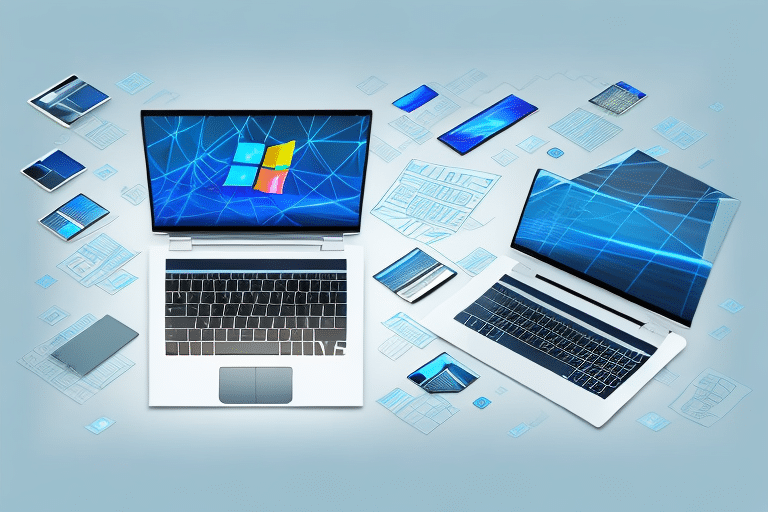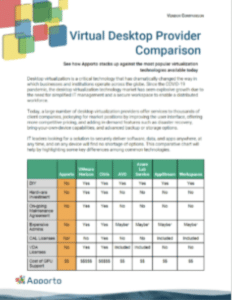The Future of Work: How Virtual Desktops are Transforming Remote Work
The world of work is rapidly evolving, with more and more employees choosing to work remotely. In fact, recent statistics show that remote work has become increasingly popular in the last few years, with 43% of U.S. employees working remotely at least some of the time. The COVID-19 pandemic has only accelerated this trend, with millions of employees working from home full-time.
The Rise of Remote Work
So, what is driving this shift to remote work? There are several factors at play, including the desire for work-life balance, increased job flexibility, and advances in technology that enable remote work. With the rise of virtual desktops, remote work has become even more accessible and convenient for employees looking to work outside the traditional office environment.
Remote work has been on the rise for several years now, but the COVID-19 pandemic has accelerated this trend. As businesses were forced to close their physical offices and shift to remote work, many employees found themselves working from home for the first time.
Factors Driving Remote Work Adoption
One of the key reasons for the rise in remote work is the desire for a better work-life balance. Many employees feel that they are unable to strike a balance between their personal and professional lives when working in an office environment. Remote work allows workers to create a schedule that best suits their needs, which can lead to increased job satisfaction and improved mental health.
Another factor driving remote work adoption is the demand for more job flexibility. With the rise of the gig economy and the increasing popularity of freelance work, workers are no longer willing to be tied down to one specific job or location. By offering remote work options, employers can attract a wider pool of talent and retain existing staff who may otherwise seek more flexible employment opportunities elsewhere.
Advances in technology have also played a significant role in the rise of remote work. With the ability to access work files and applications from anywhere with an internet connection, employees can work from home, a coffee shop, or even a different country. This has opened up new possibilities for businesses and employees alike.
The Impact of COVID-19 on Remote Work Trends
The COVID-19 pandemic has forced many businesses to adopt remote work policies, often at very short notice. With lockdowns and social distancing measures in place across the globe, remote work has become a necessity for many businesses in order to maintain operations.
However, this sudden shift to remote work has also highlighted the importance of having a reliable and secure remote work infrastructure in place. This is where virtual desktops come in.
Virtual desktops allow employees to access their work files and applications securely from anywhere with an internet connection. This means that businesses can maintain productivity and collaboration even when employees are working from home or other remote locations. Virtual desktops also offer enhanced security features, such as two-factor authentication and data encryption, to protect sensitive business data.
Overall, the rise of remote work is a trend that is likely to continue in the coming years. As more businesses recognize the benefits of remote work, we can expect to see increased adoption of virtual desktops and other technologies that enable remote work. Whether you are an employee or an employer, it is important to stay up-to-date with these trends and adapt to the changing landscape of work.
Understanding Virtual Desktops
Virtual desktops are essentially a desktop computing environment that is hosted remotely, rather than on a local device. This means that employees can access their desktop environment from any device, anywhere in the world, as long as they have an internet connection.
What are Virtual Desktops?
Virtual desktops are created by hosting the desktop environment on a remote server, rather than on a physical machine. This means that the employee can access their desktop environment and all of their files, applications and settings from any device that has an internet connection.
One of the key benefits of virtual desktops is that they allow for greater flexibility and mobility. With a virtual desktop, employees can work from any location, whether it’s their home office, a coffee shop, or a hotel room. This can be particularly useful for employees who travel frequently or work remotely.
Key Features of Virtual Desktops
Virtual desktops have a number of key features that make them particularly useful for remote workers. For example, they offer enhanced security and data protection. Because the desktop environment is hosted on a remote server, it’s much more difficult for hackers to access sensitive data. Additionally, virtual desktops allow for centralized IT management and support, which can save time and resources for businesses.
Another key feature of virtual desktops is their scalability. With traditional desktop environments, adding new users or upgrading hardware can be a time-consuming and expensive process. With virtual desktops, however, adding new users or upgrading hardware is as simple as adding more resources to the remote server.
Virtual Desktops vs. Traditional Desktops
Virtual desktops differ from traditional desktop environments in that they are hosted remotely, rather than on a local device. This means that employees can access their desktop environment from anywhere, as long as they have an internet connection. This is particularly useful for remote workers, who may need to work from a variety of locations or devices.
Another key difference between virtual desktops and traditional desktop environments is the level of control that IT departments have over the desktop environment. With traditional desktop environments, IT departments are responsible for managing and maintaining each individual device. With virtual desktops, however, IT departments can manage the entire desktop environment from a centralized location, which can save time and resources.
Overall, virtual desktops offer a number of benefits over traditional desktop environments. They allow for greater flexibility and mobility, enhanced security and data protection, streamlined IT management and support, and cost savings and scalability. As more and more businesses move towards remote work, virtual desktops are becoming an increasingly popular solution for providing employees with the tools they need to be productive from anywhere in the world.
Virtual Desktop Provider Comparison
Benefits of Virtual Desktops for Remote Work
Virtual desktops offer a range of benefits for remote workers, including enhanced security and data protection, improved accessibility and flexibility, streamlined IT management and support, and cost savings and scalability.
Enhanced Security and Data Protection
Virtual desktops are particularly useful for remote workers as they offer enhanced security and data protection. This is because all data is stored remotely, rather than on a local device, which means that there is less risk of data being lost or stolen. Additionally, virtual desktops are centrally managed, which means that security policies can be enforced across all devices.
For example, if a remote worker’s device is lost or stolen, their data remains safe because it is not stored on the device itself. This can help to prevent sensitive information from falling into the wrong hands and potentially causing a data breach. Furthermore, virtual desktops can be configured with additional security measures such as multi-factor authentication and encryption to provide an extra layer of protection.
Improved Accessibility and Flexibility
Virtual desktops offer improved accessibility and flexibility for remote workers. This is because employees can access their desktop environment and all of their files, applications and settings from any device with an internet connection. This means that they can work from home, on the go, or even from a different country, which can lead to increased job satisfaction and a better work-life balance.
Moreover, virtual desktops can provide remote workers with access to specialized software or applications that may not be available on their personal devices. This can be particularly beneficial for industries such as graphic design, architecture, or engineering, where specialized software is often required. By using a virtual desktop, remote workers can access these applications without needing to install them on their personal devices, which can save time and money.
Streamlined IT Management and Support
Virtual desktops are centrally managed, which means that IT departments can easily manage and support a large number of devices from a single location. This can lead to cost savings and greater efficiency, as IT staff can spend less time on troubleshooting and maintenance.
Additionally, virtual desktops can be updated and patched centrally, which can help to ensure that all devices are running the latest software and security updates. This can be particularly important for remote workers who may not always have access to IT support or may be working outside of regular business hours.
Cost Savings and Scalability
Virtual desktops offer cost savings and scalability for businesses, as they can be easily scaled up or down according to business needs. Additionally, businesses can save money on hardware and software costs, as virtual desktops can be accessed from any device, rather than requiring dedicated hardware.
For example, if a business needs to quickly onboard new remote workers, virtual desktops can be provisioned quickly and easily, without the need for additional hardware or software licenses. Similarly, if a business needs to downsize, virtual desktops can be easily decommissioned, which can help to reduce costs.
In conclusion, virtual desktops offer a range of benefits for remote workers and businesses alike. From enhanced security and data protection to improved accessibility and flexibility, virtual desktops can help to improve productivity, reduce costs, and provide a better work-life balance for remote workers.
Challenges and Solutions in Implementing Virtual Desktops
While virtual desktops offer many benefits for remote workers, there are also challenges to implementing them in a business environment. Some of the key challenges include ensuring a seamless user experience, addressing bandwidth and connectivity issues, and overcoming security and compliance concerns.
Ensuring a Seamless User Experience
One of the key challenges in implementing virtual desktops is ensuring a seamless user experience. This means that employees should be able to access their desktop environment and all of their files, applications and settings from any device with an internet connection, without experiencing any delays or performance issues.
Addressing Bandwidth and Connectivity Issues
Another challenge with virtual desktops is ensuring that employees have sufficient bandwidth and connectivity to enable them to work remotely. This may require upgrading internet infrastructure or providing remote workers with dedicated connectivity solutions, such as VPNs.
Overcoming Security and Compliance Concerns
Finally, virtual desktops may raise security and compliance concerns for businesses. For example, businesses may need to ensure that data is stored securely and that employees are using secure devices and networks. Additionally, compliance regulations may need to be adhered to, such as HIPAA or GDPR.
Conclusion
As remote work continues to grow in popularity, virtual desktops are likely to become an increasingly important part of many businesses’ infrastructure. With their ability to offer enhanced security and data protection, improved accessibility and flexibility, streamlined IT management and support, and cost savings and scalability, virtual desktops are well-positioned to transform the future of work.
However, it is important for businesses to carefully consider the challenges of implementing virtual desktops in a remote work environment, and to ensure that they have robust security and compliance measures in place.
Overall, virtual desktops offer a powerful solution for businesses looking to embrace the future of work and enable their employees to work remotely, securely, and efficiently.



